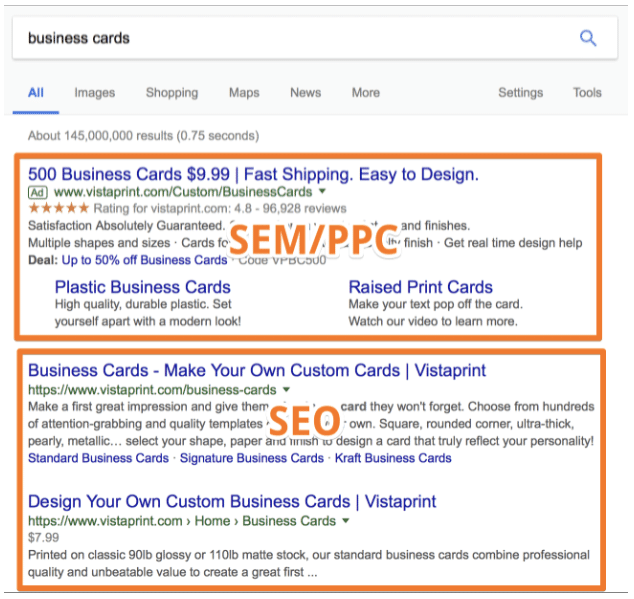No doubt about it, search engine optimization (SEO) plays a key role in content marketing.
Applying SEO tactics to your content marketing helps you secure higher search engine rankings. Having higher search engine rankings leads to greater brand awareness. It also helps you land a high-domain authority. And with a higher domain authority comes the ability to build backlinks from other sites with high domain authority. The more quality backlinks you build, the higher you rank on search engines. It’s pretty much like a cycle, with the end result being greater brand awareness.
Some people use the terms “SEO” and “SEM” (search engine marketing) interchangeably. However, they aren’t the same. They have key differences yet closely correlate with one another. Let’s take a close look at SEO and SEM and how they connect with one another.
What Is SEM?
SEM is a form of paid media that grows your company by leveraging paid advertisements. These advertisements appear on search engine results pages (SERPs).
To take advantage of SEM, you have to bid on keywords that users search for. The higher your bid, the higher the chance of your ad appearing alongside the SERPs of search queries. Most times, the paid ads are referred to as pay-per-click ads. They come in multiple formats, with some appearing as product listing ads and some as text-based ads. Product listing ads have a more visual appeal as they provide a picture of the product along with a price and reviews.
The most notable advantage of SEM is that it allows you to place your ads in front of people who are motivated to make a purchase. You won’t find this advantage with any other form of marketing.
How Does SEM Differ From SEO?
SEM differs from SEO in that you pay for the placement of your ads. You literally pay Google or another search engine to put your ad in front of people who perform searches for the keywords you bid on.
With SEO, you don’t pay Google to give you high search engine rankings. Instead, you secure a ranking for free via the creation of relevant, quality content. As long as search engines deem your content to be more relevant and of higher quality than your competitors, your content will appear first on SERPs.
So the basic difference between SEO and SEM is that one is paid and one isn’t. You increase brand awareness with SEM by paying for it. SEO comes free of charge…well, kind of. Here’s a Forbes article that will help you learn more about the cost of SEO.
How Do Keywords Impact SEM?
Keywords are at the center of SEM. When a person enters a keyword into a search box, the search engine crawls every piece of content on the internet to find the ones that are the most relevant. This means you have to bid on the right keywords to achieve high ROIs with SEM. And don’t forget that SEM can be expensive. Some keywords go for several dollars per click.
A comprehensive keyword management strategy is crucial to SEM. You have to pinpoint which keywords are most relevant to your brand. You can use the Keywords Everywhere tool to do this. All you do is type a keyword that’s relevant to your business into the search engine. Let’s use our brand as an example. Since we excel in visual content, we will type “visual content” into the Google search box.
The first thing you look at is the volume of the keyword you searched for, which is circled in the pic above. Then you’ll look to the right of your screen to see relevant keywords.
As you can see, there’s a long list of related keywords. You can use these keywords as the basis for your SEM campaign. You can also use it for SEO campaign purposes. These are the keywords you want to center your content around.
Keywords Everywhere provides not only relevant keywords but their search volume, price-per-click and competitiveness too. You can use this information to deeply refine your SEO and SEM efforts.
One way to improve your SEM campaign is to bid on keywords with high commercial intent terms. Such terms include:
- Deal(s)
- Buy
- Free shipping
- Discount(s)
- Coupon(s)
People searching for keywords with these terms tagged on are most likely ready to make a purchase. And these are the people you want your paid ads to land in front of.
Does the Biggest Marketing Budget Always Win in SEM?
A bigger marketing budget most definitely improves your SEM. However, it doesn’t fully dictate whether search engines choose your ad when displaying ads alongside search results. In addition to your maximum CPC bid, the quality score of your ad plays a vital role.
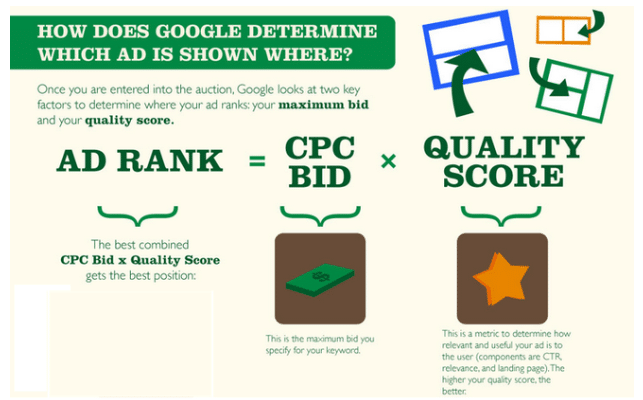
 Balancing SEM and SEO
Balancing SEM and SEO
A carefully planned content marketing strategy will use a strategic content distribution plan. And this plan will include both SEM and SEO tactics. Truthfully, SEM is a form of SEO because you are optimizing your ads for search engines via paid methods.
The fruits of SEO definitely take some time to reap, but they result in long-term sustainable growth. You’ll enjoy faster results with paid SEM, but they dry up once you stop paying. Newer websites especially benefit from SEM because it provides a way to quickly boost search engine rankings. You can put yourself on the search engine radar even if your company hasn’t been up and running for very long. But at the end of the day, SEO marketing services give you a better strategy for long-term growth.

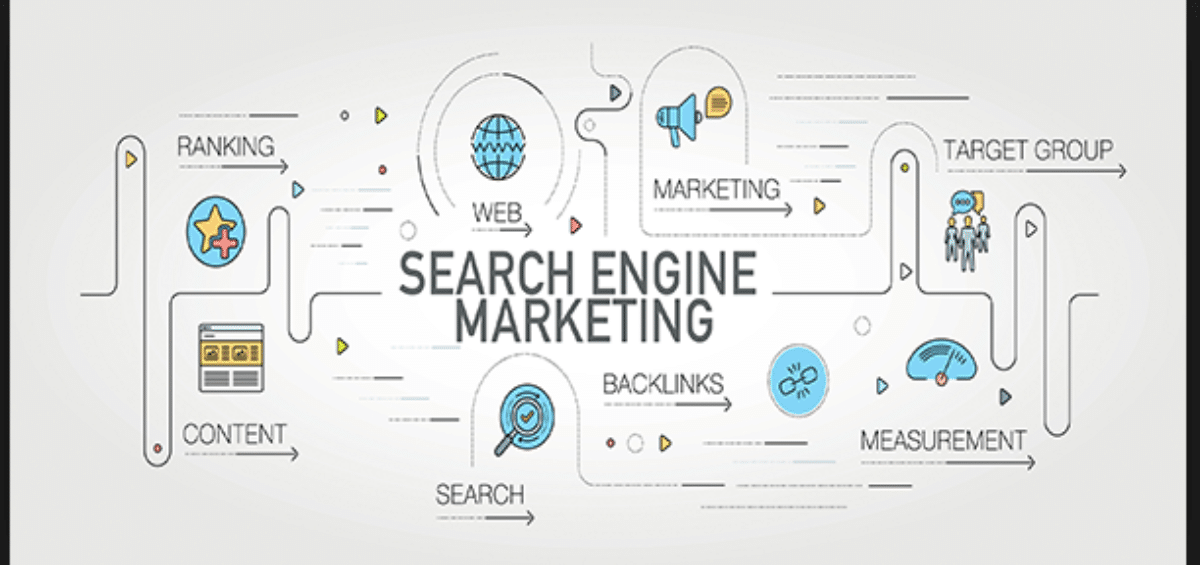
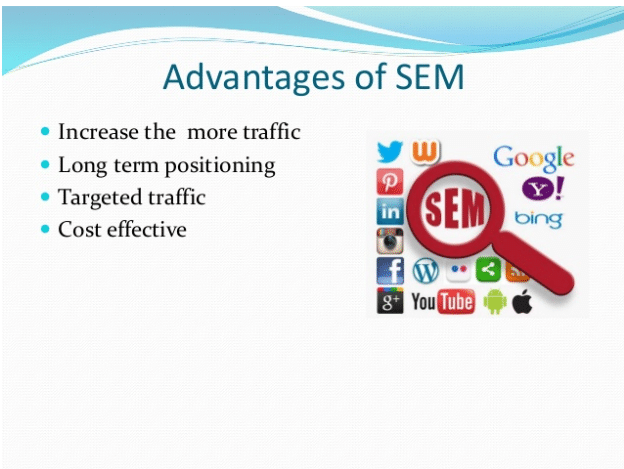



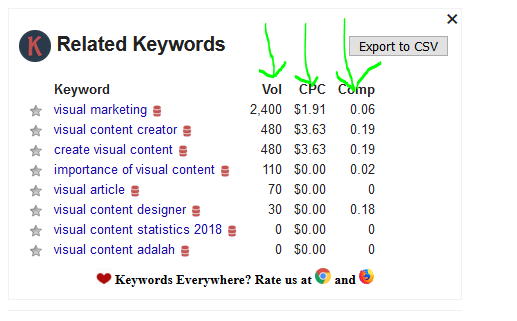
 Balancing SEM and SEO
Balancing SEM and SEO